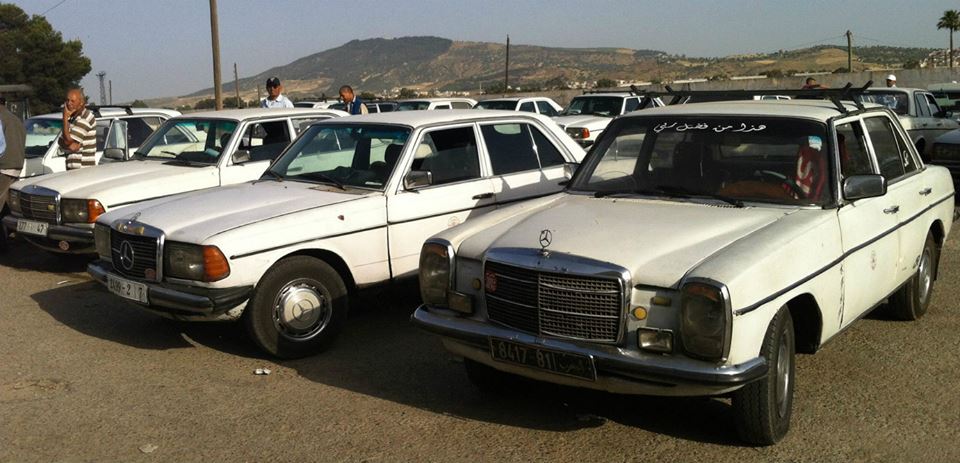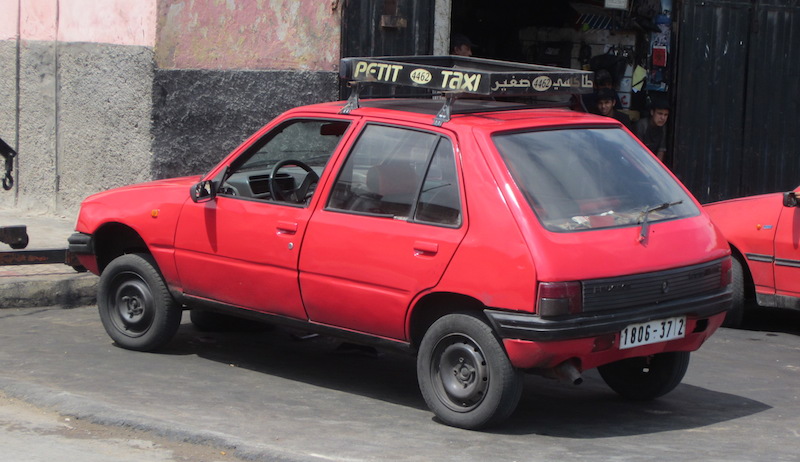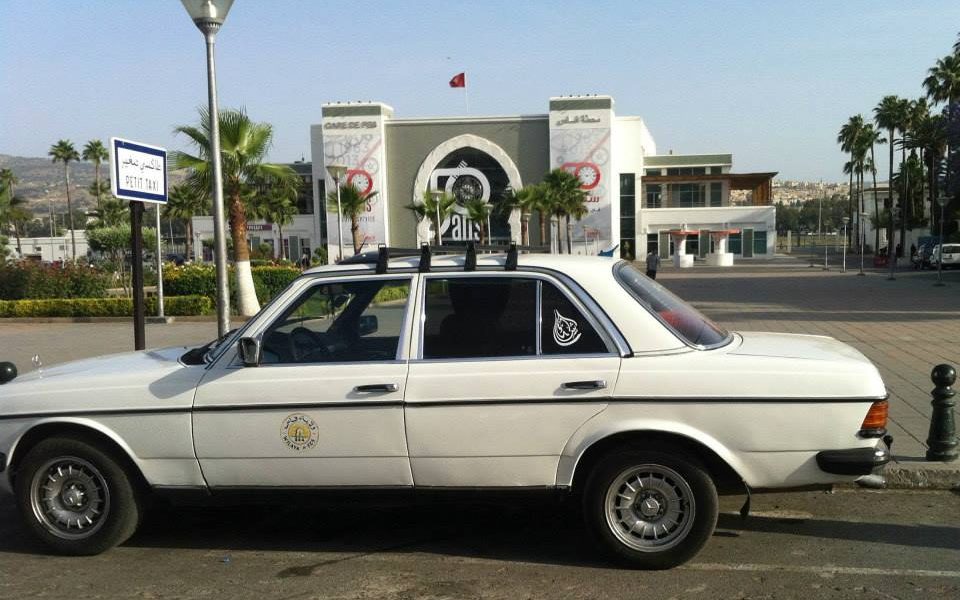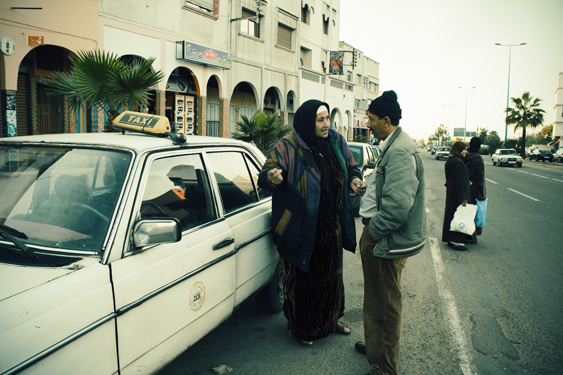Among the must-see destinations of Morocco are Marrakesh – with its colorful mosaics and golden sunsets – and Chefchaouen’s mountainous town, instantly recognizable by the contrast of its blue or whitewashed buildings and bright red roofs with only narrow streets separating them. However, most tourists typically visit only one of these destinations, and sometimes, the only thing holding them back is something as simple as the logistics of traveling from Marrakech to Chefchaouen or vice-versa.
Marrakesh and Chefchaouen are known for different sights, and this is partly due to the sheer geographical distance between the two locations. It takes an estimated 7 to 10 hours of travel to get from the city of Marrakesh to the small town of Chefchaouen. You may be wondering why the travel time seems to be so malleable, and the reason is that there are no direct flights or trains from Marrakesh to Chefchaouen. In fact, there aren’t any flights or trains to Chefchaouen. The very thing which makes Chefchaouen so unique is its seclusion and general mystery among tourism, but it is also what makes it difficult to visit. This shouldn’t dissuade you, as there are many ways to visit both Marrakesh and Chefchaouen for a determined tourist. This article will show some of the ways you can do this.
We will list the various routes by longest to shortest duration of travel, and we will be including the estimated price in order to help you with your decision making.
Private Transfer (8 hours) $350
This option is the fastest and most comfortable, but also the most expensive. If you are travelling alone, it is definitely a premium option. But if you are travelling in a group of 3 or more, it could be worth considering. It depends on your budget, but a direct door-to-door service will take away a lot of the stress and you should arrive in Chefchaouen refreshed and ready to explore. Check out more information about private taxi companies in Morocco. We recommend TangierTaxi, who also provide free bottled water to customers and WiFi in most of their cars.
Grand Taxi (8 – 12 hours) 1 seat: $50 / All seats: $300
This is one option for those on a budget. Unless you buy all the seats, it will be impossible to find a grand taxi driver who will be prepared to take you all the way to Chefchaouen, so you will have to take several taxis on the way. You will have to switch in Casablanca and Rabat. For those unfamiliar with grand taxis, they are generally old vehicles which carry 7 passengers plus a driver. Grand taxis are cramped and uncomfortable when full, because these vehicles are not really designed for 8 people in total. Bear this in mind, because the journey from Marrakech to Chefchaouen is a very long one, especially if you are uncomfortable. Since you will have to wait for the other seats to fill up, you should take this option if you are not in a rush, because you could wait for a few hours until the driver is ready to go. The small difference in price between taking a grand taxi and a private transfer from Marrakech to Chefchaouen makes the grand taxi quite an unattractive option for this route. Those on a budget should consider the train / bus options below. Read more about taking grand taxis in Morocco.
Train & Bus (12 hours) $25-46
Although this route takes the most time, it is perhaps the simplest to follow with the widest margin for error. From Marrakesh, you can catch a train to Casa-Voyageurs (in Casablanca). As it is operated by the Moroccan Railways (ONCF), a train for Casa-Voyageurs leaves every hour, and a ticket can cost anywhere between ten to twenty dollars. Trains are often running late – be careful that you do not get caught out. Upon arrival, you should catch the train to Souk El Arbaa. A train for Souk El Arbaa leaves every four hours, which is why we advise you to arrive with plenty of time in order to allow for any possible delays en route. This trip from Casablanca to Souk El Arbaa will take three hours, and it will cost nine to eighteen dollars. Sadly, this also marks the end of your journey by train, and from here, you’ll be taking a bus.
The bus station is over a kilometer away from the train station, so you can choose to either walk or utilize public transportation to go between stations. The bus to Chefchaouen costs six to eight dollars, and it leaves only once per day, so you should leave allowances in your travel schedule to account for this, or set aside some accommodations for an overnight stay. The bus takes two hours, but you’ll find that it’s all worth it once it arrives in Chefchaouen. If you plan everything properly, you could leave Marrakesh early morning, and arrive in Chefchaouen in time for dinner.
Bus (12 hours and 35 minutes) $33
Unlike the previous option, this includes only one transfer, and your travel will be limited to a bus during the entirety of the trip. You should be able to get from Marrakesh to Fes within eight hours. The bus for Fes leaves every four hours, so you can work your timetable around that with ease. However, upon arrival in Fes, you need to make sure you arrive in time for the bus to Chefchaouen. This bus leaves only four times a day, and although delays and traffic aren’t very common, it’d be safer if you planned your arrival for a full two hours before the departure for Chefchaouen. That way, you’ll have time to catch some food to eat, in addition to some sightseeing of the nearby area. The bus ticket will cost about $7-11, and after a brisk four hours, you’ll arrive at your destination with only a total of twelve hours of traveling under your belt.
Plane & Bus (7 hours and 35 minutes) $186-394
If you aren’t a fan of being earthbound for an extended amount of time while traveling, then have no worries. You can book a flight from Menara Airport (RAK) in Marrakesh, and relax on the hour-long flight to Fes. A domestic plane ticket will cost anywhere between a hundred to three hundred dollars, which makes this route one of the more expensive suggestions on this list. Upon arrival, you can catch a cab to the bus terminal, which shouldn’t take longer than twenty minutes, and arrive in time to catch a bus heading for Chefchaouen.
Plane, Grand Taxi, & Bus (8 hours and 30 minutes) $165-416
While this is the most expensive route on this list, it may be the perfect way for any newcomer to Morocco to see as much of the country as possible within a limited time span. Catch a three-hour flight to Tangier (TNG) from Menara Airport (RAK) in Marrakesh. This can cost as low as $165, or as high as $370 – it really depends on your luck and timing. Once you arrive, you can take a cab to drive you all the way to Tetouan. This should take forty minutes or an hour at most, and you’ll be able to see more of Morocco during this drive. From Tetouan, you can buy a five-dollar bus ticket to Chefchaouen, and you’ll arrive within an hour. You should know that the Tetouan bus bound for Chefchaouen leaves only once a day, so you should plan your trip around this. Also check out our advice for travelling from Tangier to Chefchaouen.
—————–
These are just some of the numerous ways of getting from Marrakesh to Chefchaouen, but I hope that reading this list has eliminated the idea that you can’t visit both tourist destinations in one trip from your mind. It may take a full day of travel and some careful planning, but you’ll find that it’ll be all worth it, as you’ll be privy to sights that even some Moroccans haven’t seen.





